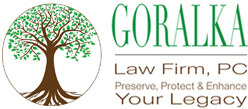The real value in a retirement account is the ability to grow in a tax deferred environment. The value from this tax deferred growth is substantial. For example, a fifty year old child who inherits a $200,000 IRA may view that account as being $120,000 after tax. This person suffers from "Instant Withdrawal Syndrome".
On the other hand, if treated properly, that fifty year old child could withdraw approximately $700,000 in
RMD's and almost $300,000 would remain in the account. If the beneficiary is able to avoid Instant Withdrawal Syndrome, then this account would have a value of $1,000,000 instead of the $120,000 value seen after taxes with immediate withdrawal. This provides a much greater overall benefit to the recipient.
If you ask any business owner when they would like to pay their bills, the simple answer is "later". Proper planning for an inherited retirement account provides for continued growth in a tax deferred environment. The longer the tax deferral status continues, the greater the growth in value. This growth is often referred to as the "stretch-out" of the retirement account benefits. On the other hand, the economic effect of a beneficiary suffering from the Instant Withdrawal Syndrome is the "blowout" which results in the account being distributed and taxes paid over five years.
Individuals who are one of the multiple beneficiaries of a retirement account must generally distribute the account over the life expectancy of the oldest beneficiary. These required distributions are called the required minimum distributions ("RMDs"). RMD's generally begin when the account holder attains the age of 70.5. If the account holder died prior to beginning the RMD's and one of the beneficiaries is a charity, estate or other "nonperson", such as a non-qualified trust, the assets in the retirement account must be distributed by the end of the fiftieth year following the year in which the account holder or owner died. This shortened distribution period can significantly reduce the economic benefit received by younger beneficiaries. I have five brothers and three sisters. My youngest brother, Mike, would be very disappointed if his distributions from an inherited retirement account were based upon my age.
For example, if Joe (65) and Martha (35) are the adult beneficiaries of a deceased IRA owner, and they inherit an IRA with a $1,000,000 balance which is to be received equally. If no action is taken before September 30th, then they would each receive total distribution from the IRA in the amount of $783,920. This is based on only a 4% rate of return and the distributions in an amount equal to the IRS established RMD's. See the table below.
If they segregate the IRA by the deadline and then make the distributions, Joe and Martha will receive the amounts indicated in the table above.
However, if Martha segregates her portion of the IRA prior to September 30th, then Martha would receive total distributions of $1,517,911. Once again, this is based on only a 4% rate of return. Martha receives $733,991 more in distributions because she is allowed to "pay the tax later." A tremendous difference in economic value with little planning and virtually no cost.
The difference is even greater if one beneficiary in the group is a charity, estate or other nonperson such as a non-qualified trust. This is really a "worst case" scenario resulting in the "blowout". Martha would be required to pay the tax due over a five (5) year period.
Martha can avoid being restricted by Joe's older age or the nonperson status of the charity, estate or non-qualified trust by Joe or the non-qualified entity taking its entire share on or before September 30th. Joe may also disclaim his interest before September 30th.
Retirement accounts inherited or otherwise, should be reviewed annually to insure that the beneficiary designations and allocations reflect your intent. I consistently find clients that fail to complete or update beneficiary designations when we work on their estate plan. This can result in unnecessary taxes, administrative costs and sometimes even probate administration. Please call if you would like a referral to a financial planner to review your retirement account designations and discuss other alternatives. As discussed briefly above, IRA's and other retirement accounts are one of the very best wealth building tools. However, the rules surrounding inherited IRA's are both technical and unforgiving. Planning for IRA succession is more important now than ever before.
This may be the first generation in which we worry that our kids will be less successful than we are. Savings for retirement is more difficult for our kids because income taxes are at historically high levels. Life is more expensive today. Today, a car may cost as much as a home did twenty (20) years ago. Companies and corporations are no longer providing workers the generous pension plans or retirement plans offered in the past. All of these factors evidence the need to stretch-out and receive the maximum benefits possible from retirement accounts.
If you have more questions about inherited IRAs please contact our office at (916) 440-8036.
John Goralka is the lead attorney and founder of the
Goralka Law Firm, P.C., and is an experienced Sacramento estate planning and tax planning lawyer. For help in Sacramento with estate planning, business planning or tax planning,
please contact our office.
![Sacramento Investment Planning Goralka IRA]()


